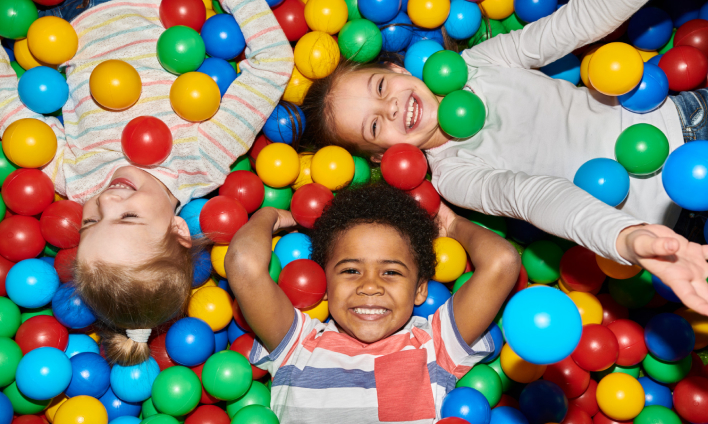Comfort Objects for Autism: How They Help Kids Feel Safe
Comfort objects are key for children with autism, offering a sense of safety and security. Learn more about their benefits.
June 24, 2025
Key Points:
- Comfort objects play a crucial role in helping children with autism manage stress, anxiety, and sensory overload.
- These items provide emotional security, promote self-soothing, and support coping during transitions or overwhelming situations.
- Choosing the right comfort object depends on the child’s sensory preferences and needs, and using them effectively can enhance daily stability.
Many children with autism experience sensory sensitivities, anxiety, or difficulty with changes in routine. Comfort objects are familiar items that help kids feel safe and grounded when the world feels unpredictable or overwhelming.
Having a comforting item can help reduce anxiety levels and improve emotional regulation for children on the spectrum. When incorporated thoughtfully, autism and comfort objects become essential tools that support emotional well-being and behavioral stability.
What are Autism Comfort Objects and Why Do Kids Need Them?
Comfort objects—sometimes called transitional objects or security items—are physical items that a child turns to for reassurance, calmness, and emotional support. For many autistic children, these objects serve as anchors during moments of distress or sensory overload.
The sensory differences common in autism can make everyday stimuli feel intense or confusing. A comfort object provides a predictable, soothing experience, helping the child regain control and feel safe. Unlike toys used solely for play, comfort objects have a deeper emotional significance and help regulate feelings.
The need for comfort items often arises during transitions, unfamiliar situations, or sensory challenges, offering an accessible form of self-soothing that empowers children.
How Do Comfort Objects Help Children with Autism Feel Safe?
Comfort objects provide a tactile or emotional anchor that helps reduce anxiety and distress. This calming effect improves a child’s ability to navigate stressful moments or adapt to changes.
When children with autism hold or interact with a comfort object, their nervous system receives consistent sensory input that can offset overwhelming stimuli. This sensory grounding supports emotional regulation, making meltdowns less frequent or intense.
Additionally, comfort items promote self-soothing skills, allowing children to independently manage their feelings rather than relying entirely on adult intervention.
What Types of Comfort Objects are Common for Children with Autism?
Comfort objects vary widely depending on individual preferences and sensory needs. These items can be soft, textured, or weighted, offering tactile, proprioceptive, or even olfactory input. Choosing the right comfort object means observing what naturally calms your child and fits their sensory profile.
Common comfort object options include:

How Can Parents Identify the Right Comfort Object?
Parents can identify the right comfort object by observing what naturally soothes their child during stressful or overwhelming moments. Pay attention to the textures, weights, and sensory qualities your child gravitates toward, whether it’s a soft blanket, a weighted toy, or a specific fabric.
Trying different options while noting your child’s reactions helps determine which object provides the most calming effect. It’s also important to consider your child’s sensory preferences and needs—some may find tactile input comforting, while others respond better to deep pressure or familiar scents.
Consulting with therapists or specialists can offer guidance on selecting comfort objects that support your child’s emotional regulation and sensory integration.
When and How Should Comfort Objects Be Used?
Comfort objects are most helpful during specific situations, but can also be integrated throughout daily routines. They’re especially valuable during transitions, unfamiliar environments, or overwhelming sensory input.
To maximize benefits, parents and caregivers should model respectful use and encourage children to rely on these items as a first step to emotional regulation.
Effective uses for comfort objects include:
During Transitions and Changes
Comfort objects provide familiarity and security when moving between activities, places, or routines, easing anxiety and reducing distress.
In Unfamiliar or Overwhelming Environments
New or busy settings can trigger sensory overload; having a comfort object nearby helps ground and calm the child in these situations.
As Part of Daily Emotional Regulation
Encouraging regular use helps children build self-soothing strategies, improving their ability to manage emotions throughout the day.
Modeling Respectful Use by Caregivers
Parents and teachers should demonstrate how to use comfort items appropriately, teaching children when it’s helpful and when to put the object away.
Supporting Gradual Independence
Comfort objects can be a stepping stone toward independent coping, gradually fading reliance as the child gains confidence and emotional skills.
Can Comfort Objects Become a Problem?
Comfort objects can become problematic if a child becomes overly dependent on them or cannot function without the item. This is especially concerning when the object interferes with learning, social interaction, or daily routines.
However, with healthy boundaries and gradual fading strategies, comfort objects can support emotional regulation without becoming a barrier to independence. Parents should monitor how and when the object is used, and introduce limits if it starts to hinder development or flexibility.
Encouraging alternative coping tools—like breathing exercises or sensory strategies—can help expand a child’s emotional toolkit while still honoring their need for comfort.
How Does ABA Therapy Support Comfort Object Use and Emotional Regulation?
ABA therapy supports comfort object use by integrating these items into personalized strategies that promote emotional regulation and independence. Therapists help children use comfort objects appropriately during challenging situations, such as transitions or sensory overload, without allowing them to become a crutch.
By reinforcing healthy coping behaviors, ABA professionals gradually teach children to rely on a broader set of self-regulation skills. Over time, the goal is to build emotional resilience—using comfort objects when needed, but also introducing new tools that help children feel safe and in control across various settings. If you're looking for ideas on supportive tools that can promote both comfort and learning, check out our article Best Sensory and Educational Toys for Nonverbal Autism.
Empower Your Child With ABA Therapy
If your child benefits from comfort objects but needs additional support to manage anxiety, transitions, or sensory challenges, Astra ABA offers compassionate ABA therapy in Indiana, Kansas, and North Carolina.
Our therapists help families integrate comfort objects into individualized strategies that promote emotional growth and independence. Contact us today to discover how ABA therapy can empower your child to feel safe and confident every day.
Related Content
Liked this article? Check out these related posts to learn even more!






Ready to start your journey with ASTRA ABA?
Contact us today for a consultation and let us be a part of your child's path to success.
Get In Touch













